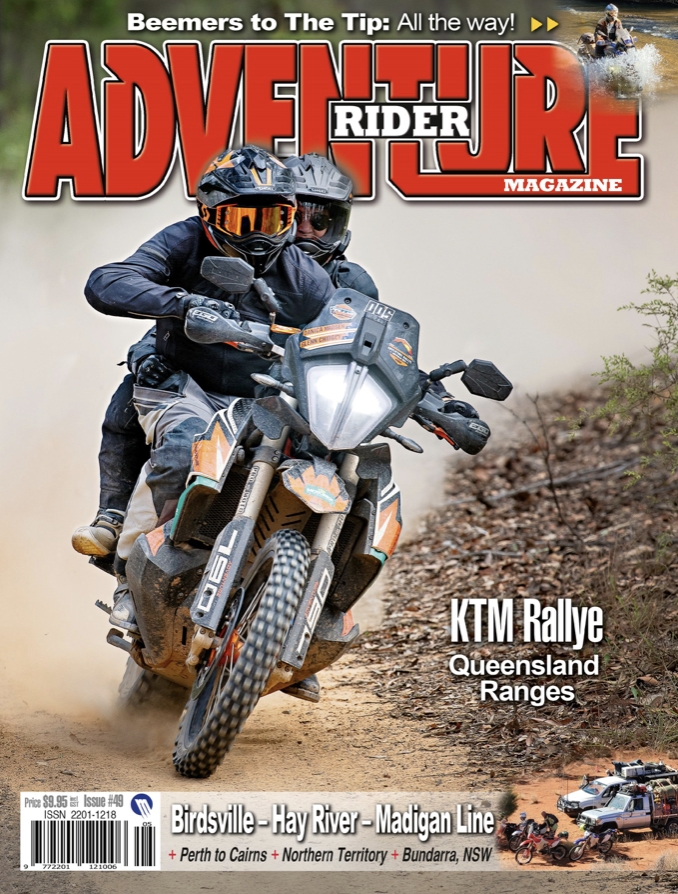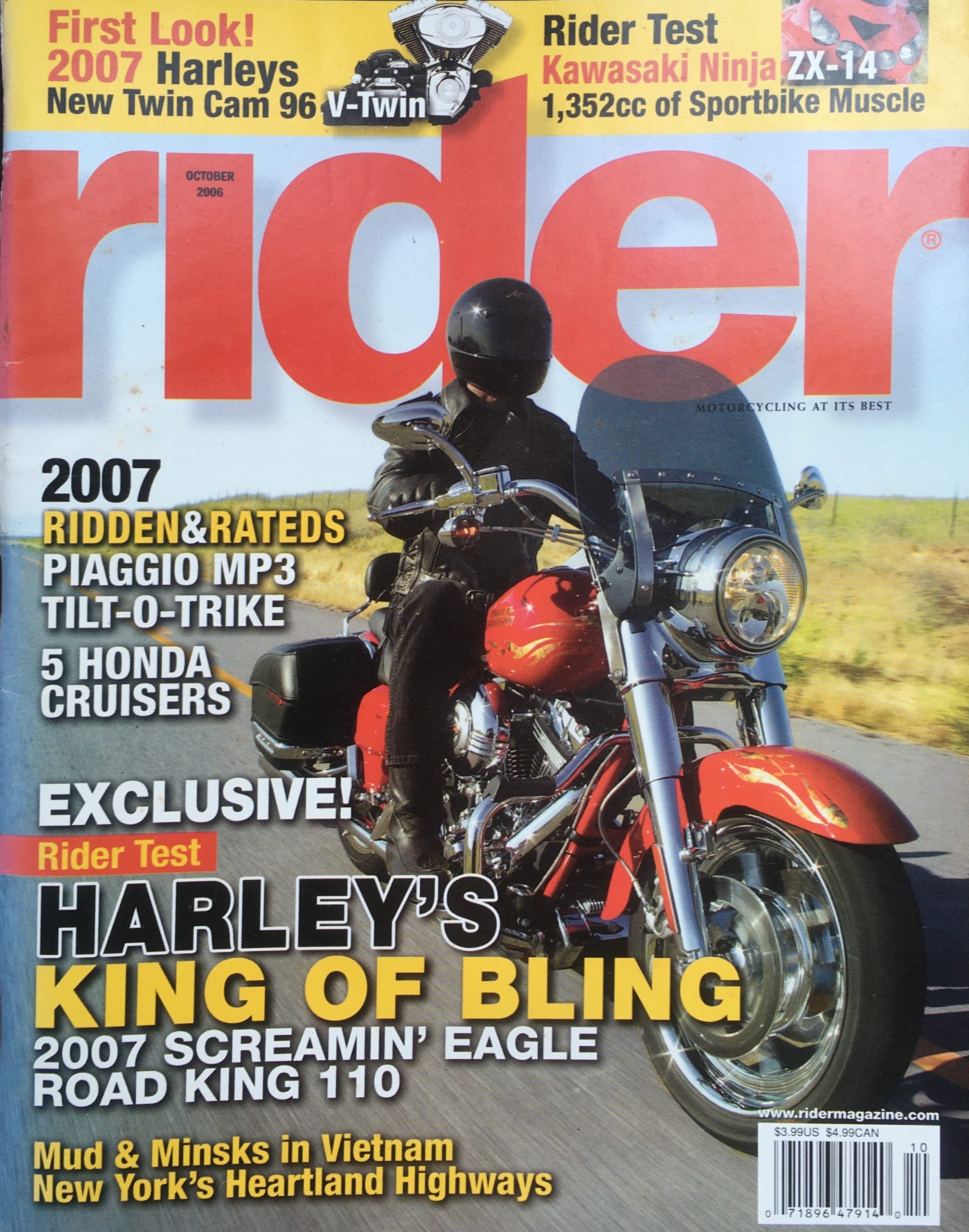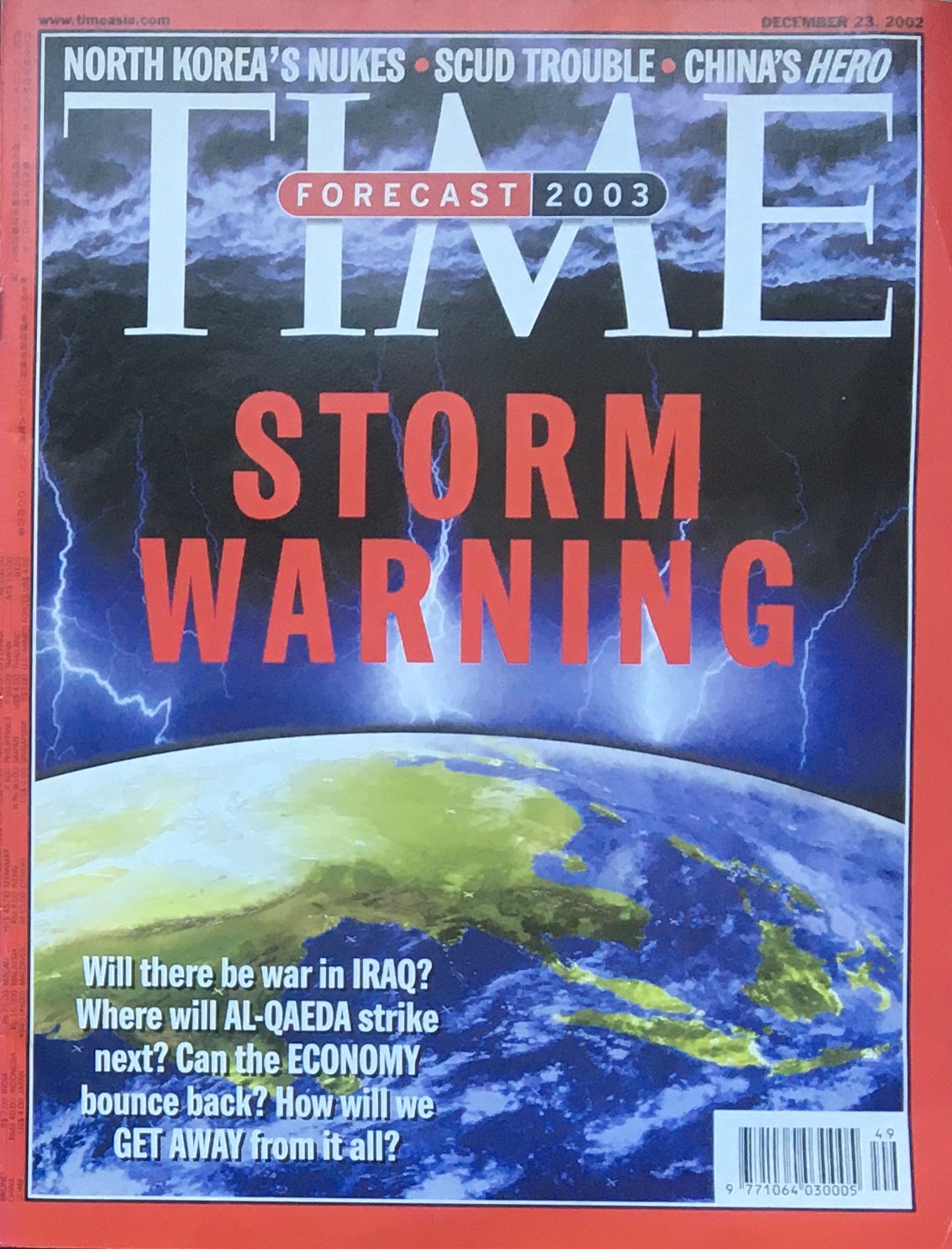American Motorcyclist
Vietnam Revisited
by Dr. Frazier
Ho Chi Minh Trail
“Jungle riding. No safety net. On your own. Dangerous. Risk of loss. Possible closed roads. Secret trails. Guns.”
These were words and phrases that kindled my interest in returning to Vietnam. The dangler of the hooks was Digby Greenhalgh, one of the principals of the Hanoi-based Explore Indochina touring company. Greenhalgh has been poking around Vietnam by motorcycle for nearly 20 years and knew of my proclivity for seeking adventure at the far end of my envelope.
I had been to Vietnam twice before, so was familiar with some of the areas he was proposed exploring. While I considered the attractive adventure options, he tossed in the biggest lure, that of using a “big displacement” motorcycle versus the two earlier motorcycles I had used in the 125cc 2-stroke class, single-cylinder Russian Minsks. What Greenhalgh was suggesting was a 650cc Ural, Russian copies of early 1940’s BMWs that had been left in Vietnam after the war.
A number of these Urals had been acquired through various means by another guru in the Vietnam Explore Indochina firm, whom I call “Doctor Cuong.” With a team of helpers the 40 year-old motorcycles had been shaken up in a bag, modified, and a small fleet of them were available for use versus the smaller Minsks.
We discussed various routes and options. I asked if I could bring a couple fellow adventure seekers, provided we could rent enough of the Urals for a group. Turns out provisioning groups on the refurbished Urals to ride from Hanoi to Ho Chi Minh City was all part of Explore Indochina’s new business offering.
A route was put together, as was a small group of expedition seekers. Our riding troop included one German BMW woman motorcyclist and four Americans, two of which having served in the Army during the Vietnam War.
We planned to try and stay off Highway 1, the main North-South highway between Hanoi and Ho Chi Minh City. My previous Vietnam experience had taught me riding on Highway 1 was on someone else’s bucket list, something I needed not to do again. I wanted the small roads, or tracks and trails that wandered on and off the newer highway known as the Ho Chi Minh Highway.
Greenhalgh assured me my hunt for roads and tracks along the Cambodia and Laos border could be done on the Ural 650 motorcycles, but he strongly suggested a guide and mechanic. We ranted at each other about my not wanting to follow a guide, rather wanting our group to explore on our own. He opined that we might find ourselves in places where we should not be, or wanted to be, as none of us would be using a GPS or spoke Vietnamese. As a certified BMW mechanic I suggested I could keep some old BMW knock-off running as well as any Vietnamese mechanic.
There were solid reasons behind Greenhalgh’s suggestions. He had not survived Vietnam motorcycle riding for nearly 20 years without learning a book full of things about riding in his homeland. Days later, after my motorcycle quit for some magical reason and our mechanic Phu repaired in minutes what I had spent half an hour trying to sort out, I was happy to have submitted to Greenhalgh’s recommendation.
Tipping the scale in favor of a locally trained mechanic was being told each of my group would be responsible financially for the loss, confiscation, death by fire or misplacement of each motorcycle to the amount of $7000, and if my invitees did not pony-up the $7,000 Greenhalgh would personally hold me responsible. I went “Gulp!” and decided to go with the Greenhalgh suggestion. I thought about a motorcycle breaking down and our group not being able to fix it, then leaving it or sending it back to Hanoi on a truck and not having it arrive.
One of the reasons for the big cost of motorcycles in Vietnam is a high import tax, between 100% and 150%. That made the one Goldwing I saw on a previous visit worth $50,000 to the Vietnamese owner. The old Urals were taxed, plated, some lost to spare parts and each modified to the point where they had a real value of $7,000 even though they were 40 years old.
Motorcycling in Vietnam was no place for a beginner. Western driving rules did not apply and I had to reverse much of my usual touring protocol. For instance, Greenhalgh advised us not to fill the motorcycle gas tank at the end of the riding day, a habit I long have lived by so as not to break-up my morning starts. The reason for an empty gas tank at night in Vietnam was that way gas could not be taken from the parked motorcycle during the dark hours. For a good list of “tips” and tricks on riding motorcycles in Vietnam, Greenhalgh posts his observations on www.rideasia.net.
Leaving the clogged streets of Hanoi as a group was much the same my previous solo efforts. Traffic was snarled, horns honking and anything bigger than me had the right of way, as did anything smaller. The one notable change was motorcyclists wearing motorcycle helmets, a new law having kicked in over the last several years.
Once away from Hanoi, traffic thinned to an occasional bus or truck and small displacement motorcycles. Whenever our group stopped, whether for gas or meal, a crowd would gather around and look at the Urals. Sometimes people would want to sit on them and have their picture taken, other times they wanted to know “how big” and “how much cost?”
We had no hotel or guesthouse reservations. Several times our group of six would show up and were offered a group sleeping room. These rooms had six to eight beds with clean sheets and mosquito netting, shared toilets and often chickens running around outside, but all were clean and warm enough for the thick blankets provided. Our German female team member had learned from previous expeditions with me to wear ear plugs at night, so she slept peacefully while newbies in our group discovered what real loud snoring was and how to discourage it with a motorcycle boot aimed at the snorer across the room.
Gas was plentiful, as was oil for one or two of our motorcycles that liked to leak more than burn. Two flat tires were fixed within minutes by Phu, who not only carried extra tubes but one new tire, which was eventually used.
Food was always an adventure. Since none of us spoke Vietnamese and our translation book was better left in the tank bag, we often took what the cook was preparing. That meant a table for six with a mix of offerings from chicken foot soup to possible dog. Dog was served in one village we passed through, because I saw several skinned mutts hanging upside down as we passed an open air meat market. I learned not to ask if the food tasted good and was hot, except when it looked as if it might have slithered on the ground. I hate snakes, whether boiled, fried, or in a glass jar fermenting as snake wine. I left one table that had a large snake in a bottle sitting on the table for the wine drinkers so inclined.
Twice police were working the roads when we passed. Our initial group decision was to keep driving when they flagged us down. The reasons were based on the fact we were trying to avoid explaining why we did not have papers in our name for the motorcycles, or big wads of money to throw at the problem. This left Phu, our Vietnamese mechanic, who was in the back of our group, to be the first a chasing policeman might catch. He had paperwork that looked close enough at a glance and could say to the policemen, “Hey, I am just the mechanic. Those other people are in charge.” With no computers or radios the rest of our group would escape the trap, and the police would know Phu, as the mechanic, would not be the money guy. We would wait some miles down the road for Phu to catch-up, and then buy him an extra large dinner that night for a “job well done.”
At one road the guards and bureaucrats said, “no entrance.” We milled around, gave away stickers, shuffled feet, and our mechanic found a “maybe” answer from one enterprising official outside the offices in the parking lot. The “maybe” became a “yes” after a dollar amount was agreed to pay for a guide from their government group. He would lead us through the Forbidden area on his 125 cc motorcycle, and “no pictures” were to be taken.
The road was a nicely paved route through a scenic area designated as an eco-reserve. The nearly year-round rain made the jungles lush, and on this day the guide a bit wet. He eventually gave us a stern warning about the road ahead and turned around. Of course, none of us knew what he said in Vietnamese to us, so likely we did not follow his instructions while wandering south. Later our mechanic filled us in, “Oh and he said ‘No stopping and no photos.’” Then we understood.
Thick and picturesque jungle riding near the border with neighboring Laos.We nod OK to whatever the guide was telling us not to do not understanding a word said until later in the day. Find this location and you have been lucky in your adventure scavenger hunt – it was in a Restricted area on the Ho Chi Minh Highway.
Year-round rain and high humidity allowed thick jungles to grow in every corner of the route through the eco reserve.
For nearly two weeks our small group wandered south, sometimes on the new Ho Chi Minh Highway, other times on truck roads or feeder tracks that 40 years earlier were feeding supplies onto the Laos Ho Chi Minh Trail. An average day would be some pavement, mud, sand, ruts and broken pavement or gravel under construction.
After the first few days we decided to skip lunch stops. It was not a group vote or “save money” reason, more of a matter of reality. Where we found ourselves at midday would not have a restaurant. Several times we drove sections or tracks without seeing another car or truck for hours, let alone a place to eat. It was easier to bulk-up at breakfast on whatever was being served, then snack out of our pockets or tank bag with what we were smart enough to purchase when we saw it, possibly the night before, or maybe in a small shop next to a gas stop. No one lost weight over the decision and it added an hour of driving time to each day.
A long day would be 250 miles. A harder day could be 150 miles if we had to flog through jungle tracks, cross streams or deal with city traffic congestion. Each day started with the group moving about 9 a.m. and could end at anywhere from 5 p.m. to 8 p.m.
No one complained at the end of a long jungle day. Most complaints came after fighting traffic in Hanoi, Ho Chi Minh City and on and off of Highway 1. Generally these grumbles were met with laughter. The group had been selected for their adventurous spirit and willingness to bend when the wind blew hard. Early in the expedition when one member complained about the food at lunch (mystery meat and a boiled chicken foot in the soup), the next day the group skipped lunch. When the “ride to eat, eat to ride” complainer from the day before commented at dinner on the missed noontime meal, the others jointly said, “We skipped the lunch stop because we didn’t want you to be unhappy and complaining about the meal.”
One of the group was a digital wizard, wired and tied to the Internet when we booked into hotels with access. These hotels would be in the $40 range and though the Internet was slow, it allowed contact for those of us wishing to let someone know where we were and that all was OK. Half of our group cared, the other half did not. For an Internet-tethered traveler, the jungle expedition route would have had them in serious withdrawal. For others, it was a pleasant feeling to be unconnected for days at a time.
As we got closer to Ho Chi Minh City we chose a route that took us several hundred kilometers along the coast. We passed pristine white empty beaches with an occasional hotel or resort, quiet vacation areas for those looking to getaway. Closer to Ho Chi Minh City the beaches became populated with tourist facilities and could have been replicas of typical beach areas from Bali to Brazil.
The final dash was into Ho Chi Minh City, madness similar to that of Cairo or Mexico City during rush hour. About 20-30 kilometers from the city center, trucks and busses interspersed with cars belched diesel and oil smoke from worn engines in 90-degree temperature. Our group was met on the edge of the city by a local guide on a small motorcycle who helped us weave through the clogged roadways to a truck depot. There we unpacked the motorcycles, thanked our local guide and wished our mechanic well with a group gratuity. We then hired a minibus taxi to take us and our dirty road gear to the hotel area in the center of the city. The motorcycles were loaded onto trucks and carted back up to Hanoi over Highway 1 while our mechanic flew over the ugliness in a commercial airliner.
Our policy of “no reservations for hotels” meant we had to try two or three before finding one that was within our “OK” budget ($25-45), clean, and had an elevator so we were not walking up three to five flights of stairs in the sweltering heat. The deal maker for our group in Ho Chi Minh City was an affordable hotel, with an elevator, next to a newly opened Kentucky Fried Chicken restaurant, the second in Ho Chi Minh City. Only one of us ate there, but the friendly sign of the smiling Colonel Sanders image tipped the scales to a “Yes” versus loading our gear back into yet another taxi.
As our group met for the last time over dinner that night we reflected on our two weeks in the jungles and on the roads of Vietnam. The KFC eater said he could have lived without the chicken snack he had, but that it was nice to know exactly what he was eating. Our Alaska American was
already making plans to extend his stay versus returning to the cold near the Arctic Circle. The German female adventurist wanted to know where “our” next extreme journey would be and whether we could come back to Vietnam.
One question remained unanswered, that being from one of the American GIs. One of the reasons he wanted to come on the expedition was to see if he could find his old Army dog tags, the ones he had left hanging over a bedpost in Da Nang “in a hooch” 40 years earlier. Of his missing dog tags in Da Nang, he said, “The Da Nang we saw was not the Da Nang I left my dog tags in; I didn’t even see a hooch.”
As for my return to Vietnam in the future? The engineering magician Doctor Cuong has been building some very interesting motorcycles, mixing a Honda 125 engine/transmission with a Minsk frame, ideal for one person to manage through jungles. Meanwhile, Greenhalgh has been dangling some wild tales of trails in front of me, tidbits of secret places along the Chinese border and into Laos. So far he has not mentioned snakes.
More Articles
ADV Rider Magazine
by Sean Goldhawk
Rider Magazine
by Perri Capell
TIME Magazine Asia
by Kay Johnson




























